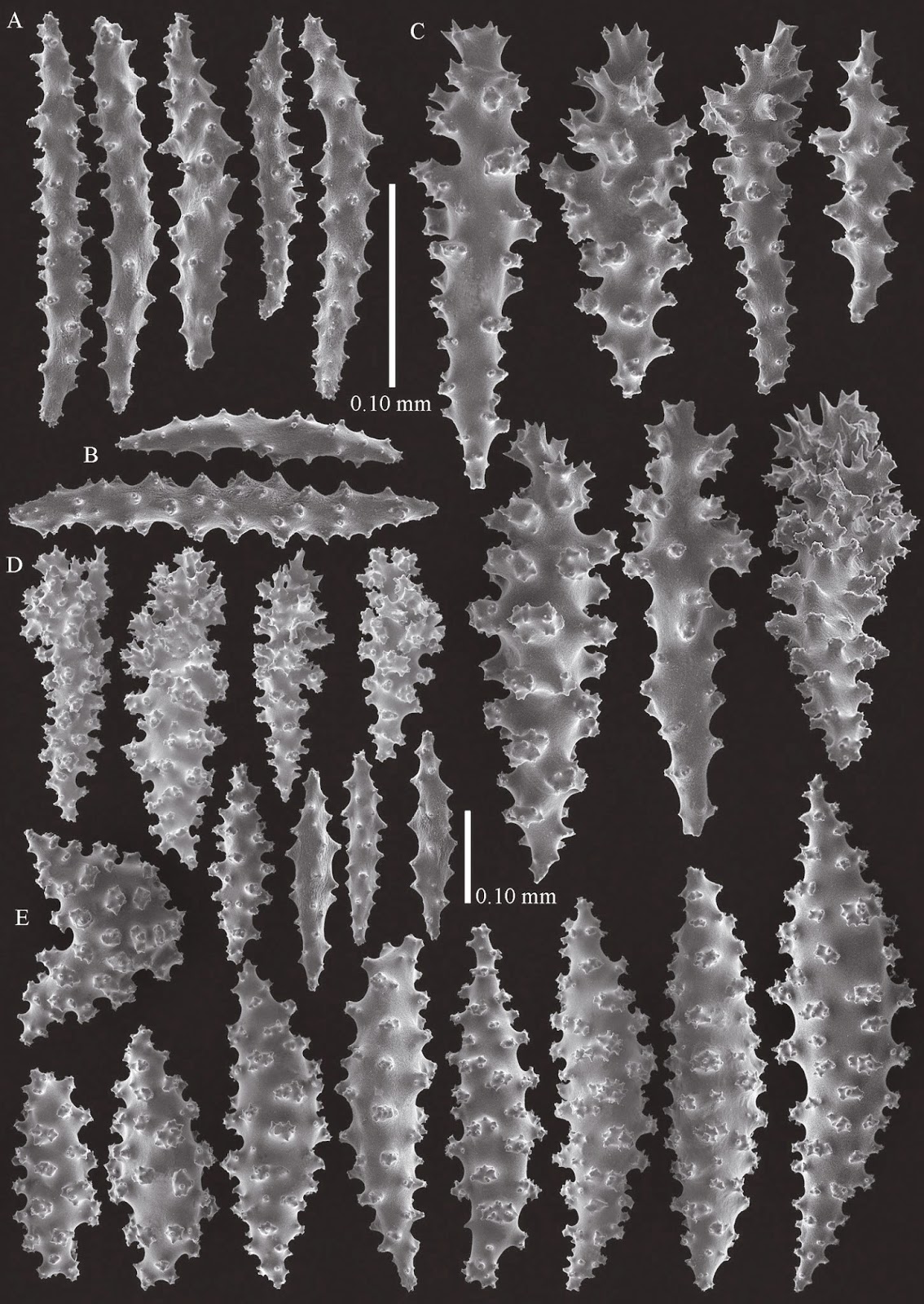Soft Corals (Octocorals) of the genus Alcyonium form encrusting, lobed colonies on shallow rocky surfaces
in tropical waters. These Corals typically have brightly coloured polyps, and
have supporting skeletons made up of calcareous spindles.
In a paper published in the journal ZooKeys on 10 December 2014, Leen Van Ofwegen of the Naturalis Biodiversity Center in Leiden, Didier Aurelle of
Aix Marseille Université and Avignon Université and Stéphane Sartoretto of the French Research Institute for Exploitation of the Sea describe a new species of Soft Coral from offshore waters of the
Republic of Congo.
The new species was initially thought to be a member of the genus Alcyonium, but a genetic study revealed
it to be separate from the majority of species in the genus, though it is
closely related to a group of other species from the west coast of Africa. For
this reason a new genus is erected, Complexum,
for this and other species from West Africa formerly assigned to Alcyonium. The name Complexum means complex, a reference to the complex tubercles on
the spindle elements of the skeletons of this genus. The species is given the
specific name pusillum, meaning
‘tiny’ in reference to the size of its colonies.
Complexum pusillum. (A) Point spindles; (B) collaret spindles (C–D) clubs of surface
layer (E) spindles of interior. Van Ofwegen et
al. (2014).
Complexum pusillum forms tiny lobe-like colonies on rocks 5-20 m deep between the
outflow of the Congo River and that of the Kouilou River. This is an area of
high turbidity, with a high input of sediment and other material from the river
– not an environment usually favoured by Corals. The polyps of the Coral are
completely withdrawn, possibly as an adaptation to this high sediment input
environment, so that is superficially resembles a Sponge more than a Coral.
General view of a small patch of colonies of Complexum pusillumon rocky bottom at Banc
du Conflit, depth 10 m. Van Ofwegen et al.
(2014).
See also…
The Abrolhos Bank is an area of the Brazilian continental shelf to the
south of Bahia State, noted for its large and rich coral reef fauna and
unique...
Zoanthids are unusual Corals with similarities to both the reef-forming
calcareous skeleton excreting Scleractinian Corals and the larger, free
living Sea Anemones. Most species are colonial, with...
Scleractinian Corals first appeared in the fossil record in the Middle
Triassic; they are distinct from, but believed to be related to the
Rugose and Tabulate Corals of the Palaeozoic. All modern Corals...
Follow Sciency Thoughts on Facebook.





